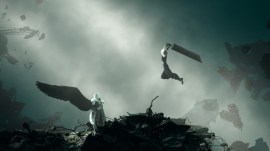Dying Light 2 Stay Human review: a worthy sequel
An uneven story doesn’t spoil this sequel’s feast of free-running fun
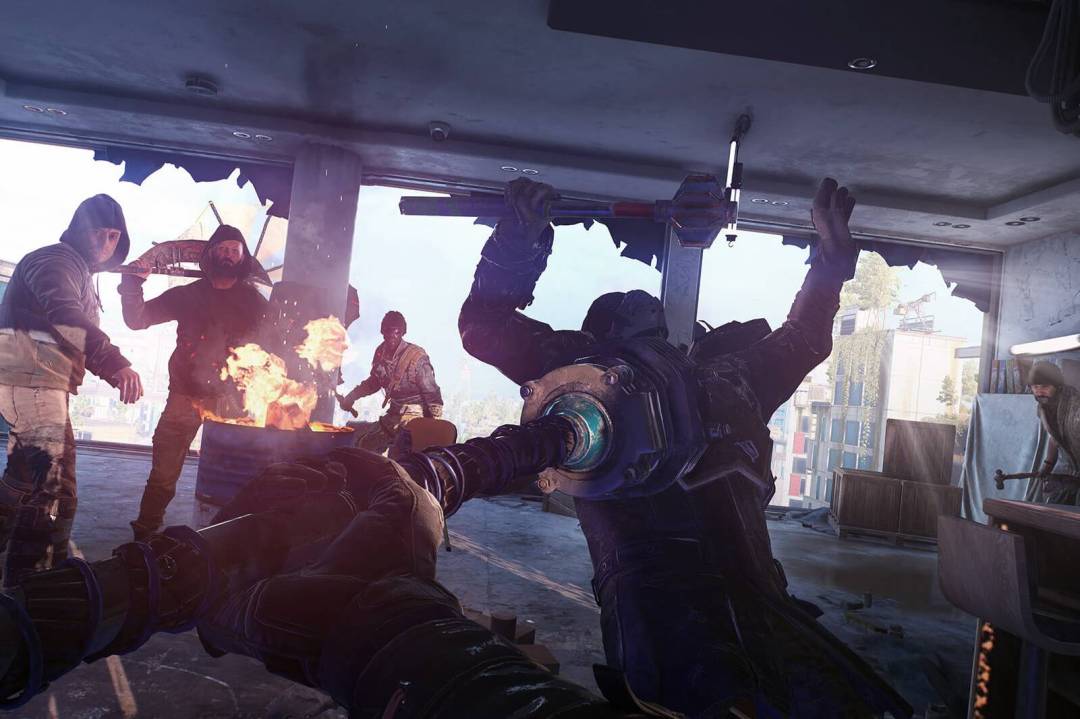
Released back in 2015, the original Dying Light proved to be a rough diamond with long legs. That’s a weird image, we concede, so let us put it this way: Dying Light was much more enjoyable and inventive than any open-world first-person zombie adventure had any right to be, and it has been excellently supported by developer Techland with DLC, updates and improvements for well over five years.
Expectations have been set dangerously high for Dying Light 2 Stay Human, with promises from Techland that the original game’s weakest facet – its storyline – would be vastly improved for the sequel. Previews boasted of the player being tasked with making difficult but meaningful choices that would steer the plot while drastically altering the world in which it takes place. Marry that to the first game’s free running-influenced movement, jazz up its combat and visuals a bit and, brother, you’ve got one heck of a stew going.
Does Dying Light 2 live up to these lofty expectations? Not quite, although it’s still a brilliantly fun game with a superb parkour playground of an open world. Read on to find out what works and what doesn’t.
Muddled plotting
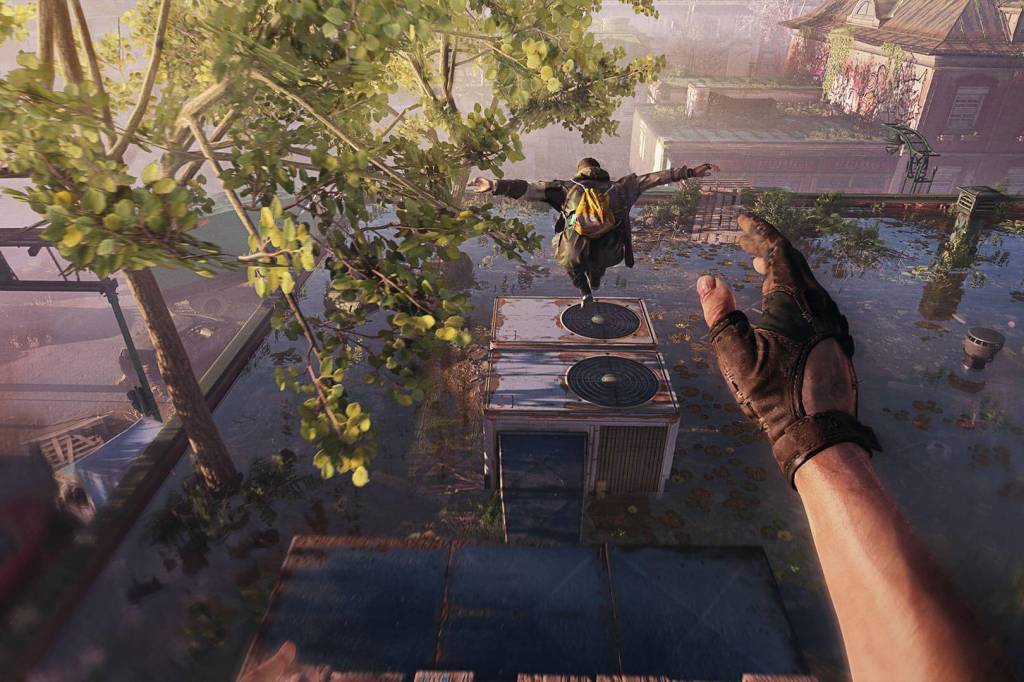

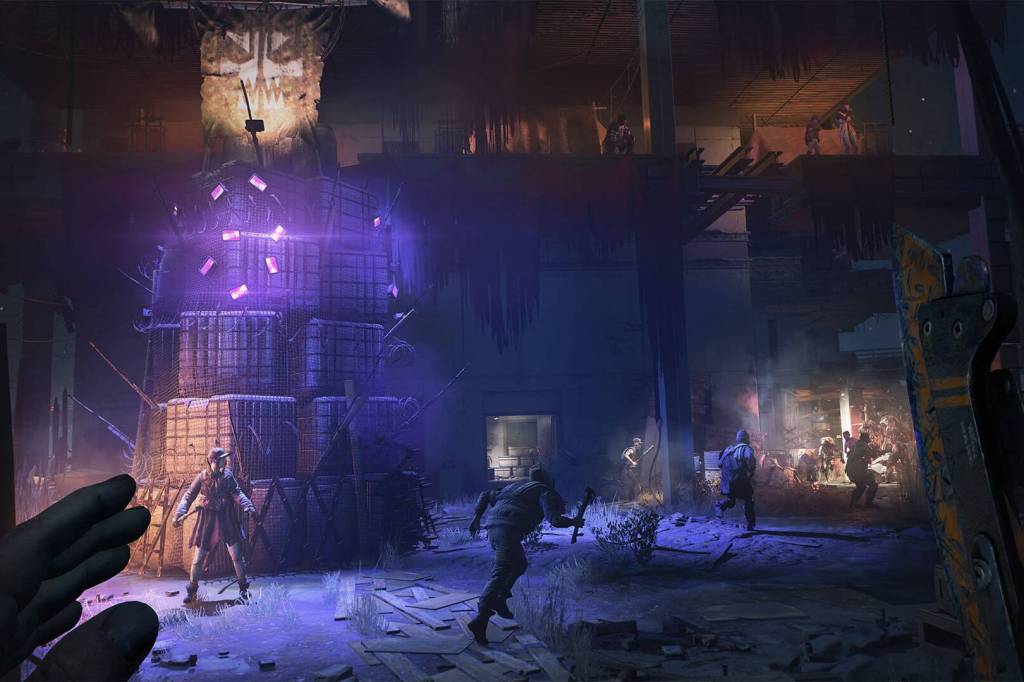
The bad news? The storyline is only marginally better than the first game’s, and nothing to write home about even by the uninspiring standards set by most open-world games.
It starts off with a promisingly simple premise: our protagonist Aiden, a wandering messenger who transports packages between the few remaining outposts of humanity in a post-apocalyptic 2036, receives a lead on the whereabouts of his long-lost sister. He steals into Villedor, the last remaining city on earth, to meet up with a contact promising the information, but the plan quickly goes awry. He finds himself alone in a restive and deadly urban jungle with only a fresh zombie bite for company.
From there on you’ll be introduced to members of the two main factions who control the city – one a ragtag bunch of anarchists seeking to avoid the mistakes of the past, the other a regimented militia promising to restore law and order – undertaking jobs for both until a point where you’ll have to choose which one to side with. This happens several times in the process of the story, and whenever you reactivate one of the city’s water towers or power plants you’ll have the option to hand control of it to one of the two factions. Doing so will unlock some sort of boon for you (like extra ziplines to get around faster, or booby traps that’ll buy you some time against the shambling hordes), but it doesn’t seem to really bother either of the factions if you repeatedly side with the other.
We only played the main story through once (it’s a very long game, which I’ll get to later), but got the strong impression that these decisions don’t matter all that much: it might mean a character not appearing in a cutscene later, or your decision might be mentioned by another character, but we suspect the story will end up pretty much in the same place in the end. The developers have claimed that the choices made during each playthrough will result in “at least 25 percent” of the content being closed off, however – but we’ll need another entire playthrough to find that out.
We also got the impression that the narrative has been rewritten and remixed many times during development. Its pacing feels off; seemingly vitally important characters, themes or concepts appear and then drift out of the story never to be heard from again; there’s an entire third faction we barely see or interact with at all until the very end of the game; and the entire climatic sequence, which should feel like a satisfying pinnacle to the story, just left us a bit confused and a bit annoyed.
That said, yes – the story is indeed better than that of the first game, with more choice and agency given to the player. It’s just uneven and somewhat unsatisfying (at least in our playthrough) so don’t go into this expecting to be taken on an emotional journey for the ages in the vein of The Last of Us.
A solid core
Disappointing narrative aside there’s lots to admire here; Dying Light 2 is built around a core of gameplay that is fundamentally enjoyable. Aiden moves around the decaying urban sprawl of Villedor like a two-legged gazelle, leaping across rooftops, swinging on monkey bars, scaling handholds and, er, zipping down ziplines – and that’s just at the beginning of the game, prior to you unlocking more advanced parkour skills (such as wall-running and the ability to slide under obstacles) and new equipment like a glider and grappling hook.
There’s a simple but vital joy in hurdling obstacles, dodging the undead and moving through the city, finding the optimum paths to traverse with a minimum of friction. You’ll come across random events as you do so – people in need of help, bandits in need of killing – and spot places to loot. As with the first game, there’s so much to do and so many spots to climb to that you don’t really need to worry too much about the story. If you’re bored, just take a break for a while to explore a new area, tackle some side quests (many of which are fairly sizeable, multi-stage affairs) or plunder a dangerous Dark Zone for better equipment or permanent stat boosts.
Villedor isn’t the most visually varied of open-world settings we’ve seen, but its two zones (one consisting mostly of older low-rise buildings, the other towering skyscrapers and freeways) add up to a huge area to explore, especially when you consider the verticality of the map.
All this content makes for a lot of gameplay. Techland claimed there’s potentially 500 hours of stuff in here, but that appears to be with multiple playthroughs in which you make different decisions each time. We definitely ploughed a good 40 to 50 hours into our single playthrough, and to get the game finished in time to write this review we had to suppress our natural inclination to tick off all the available side-quests and activities in order to concentrate chiefly on the story missions. So yes, if you’re looking for a game that provides a lot to do, this is it.
Fight club

Parkour also plays its part in combat. Techland has largely removed guns from the game (a good move – they never felt fun to use, or come up against, in the first one) so aside from some thrown weapons and bows, you’ll mostly find yourself engaging the enemy in melee bust-ups. Stun an enemy by timing a dodge or block perfectly and you’ll have a window in which you can vault over them, delivering a powerful two-footed kick to one of their buddies, potentially sending them flying off a high rooftop or into a conveniently-located rack of rusty spikes.
The fights are brutal and fast-paced, with more moves being added to your repertoire as you level up the combat side of your character (which works in much the same way as the parkour side: you gain experience by completing quests and activities or simply through fighting and/or free-running).
Night moves
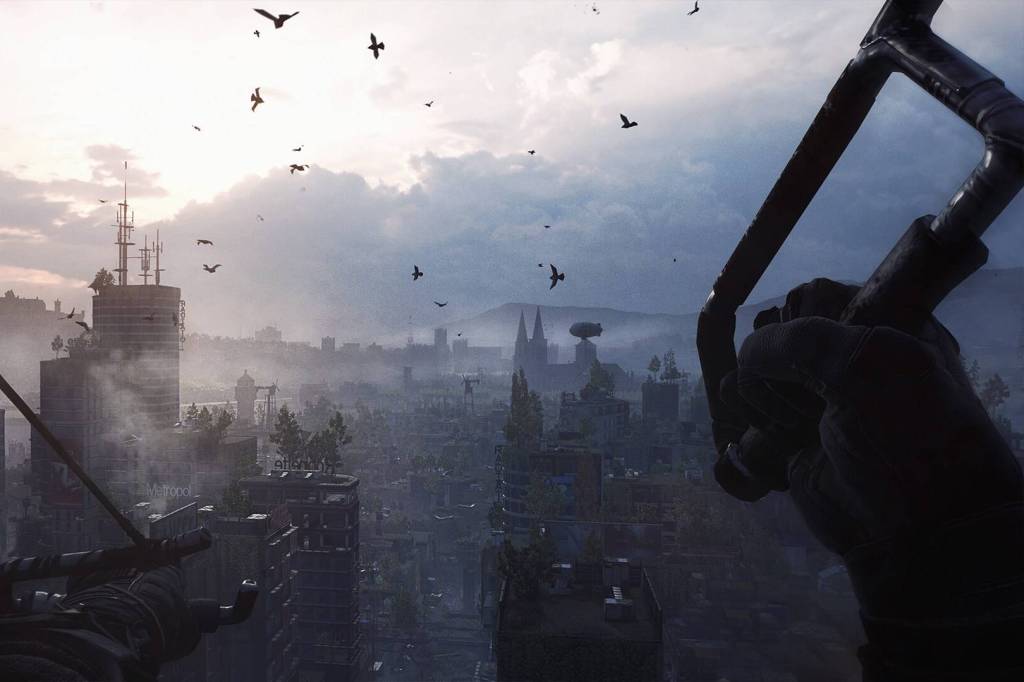
The day/night cycle returns, albeit with slightly different mechanics. During the day, you mostly meet only slow, shambling zombies outside in the streets – the faster, more dangerous types are sleeping indoors. That not only means you should explore the interior of buildings at night, when its undead inhabitants have gone outside to hunt, but that being outside at night is more dangerous: run into a Howler zombie and it’ll alert all the other ghouls in the vicinity, sparking off a chase that will involve faster zombies and only end with you hiding from sight, protecting yourself in by finding a UV-lit safe spot or being chewed on by a horde of fast-moving Virals.
As you’ve contracted the zombie infection yourself, you also need regular doses of UV light to arrest the progress of the virus. Go into a dark area or outside at night and a countdown begins: if you don’t find UV light or boost your immunity through consumable items before it expires, you’ll succumb to your infection and join the ranks of shuffling flesh-eaters. Stay Human, indeed.
In reality, you’ll rarely find yourself in any genuine danger of turning (I played the entire game on hard and it happened to me two or three times, generally because I foolishly strayed into an area doused in infection-accelerating chemicals), but it’s a nice mechanic for keeping you on your toes and making the night and day cycle feel more meaningful.
Technically sound

We experienced a fair few bugs during our review playthrough, the worst of which was sorted out via a hotfix. Techland’s PR reps are promising a huge day one patch that should helpfully iron out the other (more minor) kinks, of which there are quite a few – so if you’re at all worried we suggest waiting a few days before buying. Hopefully, any egregious glitches and bugs will have been removed by then.
Visually the game is often stunning, occasionally a little ropey looking and usually somewhere in the middle – a bit like the original Dying Light, in fact. The visual style is vibrant and colourful for the most part (who says the end of the world has to be dull and dreary), with some great lighting at times, while night-time exploration can be a creepy affair, particularly when the purplish glow of your UV torch illuminates a charging Viral right in front of you.
The PS5 version we reviewed has three visual modes: performance (which delivers a constant 60fps, and which we mostly used), resolution (which delivers native 4K) and quality (which features ray tracing, but at a cost to frame rate and resolution), and all seemed to do what they promise as far as we could tell.
The audio is also impressive, with solid voice acting throughout (including a turn by Rosario Dawson) and some seemingly context-aware musical scoring that kicks in when you’re in a long parkour session.
Verdict
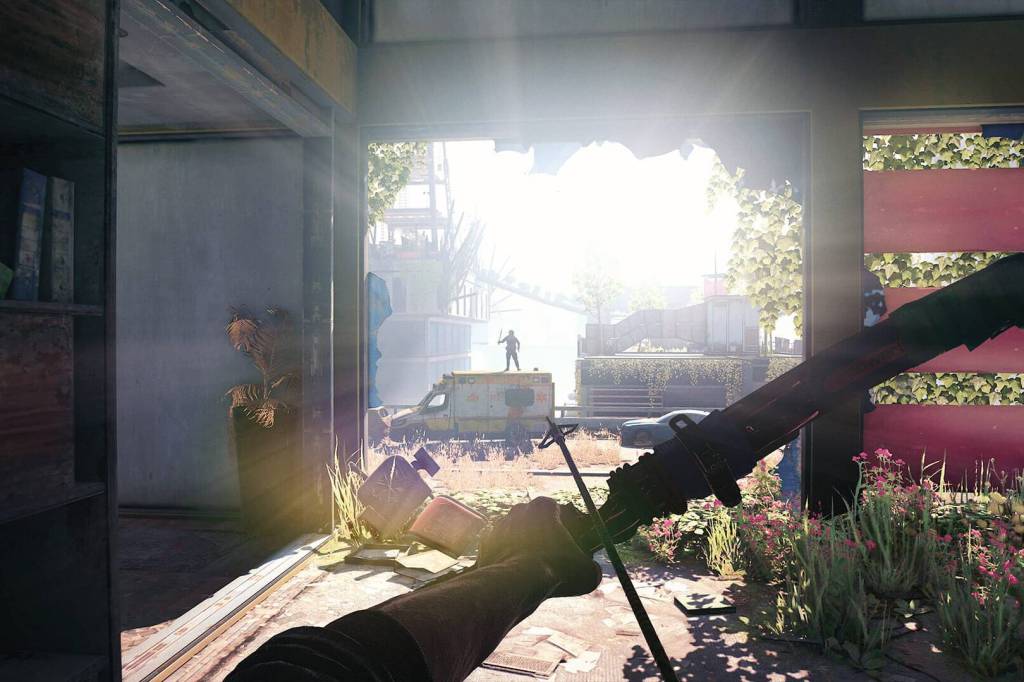
Despite our disappointment over the story (which was mainly because the hype had boosted hopes), we had so much fun with Dying Light 2 that we can’t help but recommend it. It improves on virtually every aspect of the first game and provides many, many hours of enjoyment. The open world is a pleasure to explore, the parkour mechanics are keenly honed and the combat is exhilarating and involving.
All that and we haven’t even touched the multiplayer yet. Look out for an update on that in a few weeks, when hopefully we’ll also know more about Techland’s future plans for the game – which they say will be supported for the same five years as the original Dying Light.
Stuff Says…
A worthy sequel to a beloved game, offering improvements in almost every area
Good Stuff
Superb parkour movement
Huge, traversable open-world setting
Better story than first game
Bad Stuff
Uneven, slightly confusing story


